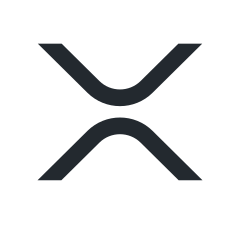The Graph – a service that helps applications collect and interpret blockchain-based data – announced Thursday that it will be sunsetting its centralized Hosted Service early next year.
Representatives for Edge & Node, the original team behind The Graph, did not provide an exact date for when the free Hosted Service will be deprecated. They say app developers using the platform will be encouraged to migrate over to the pay-per-query Graph network, which relies on a distributed community of Ethereum-based “indexers” to handle data rather than the Hosted Network’s single operator. GRT is The Graph’s native token.
“This big vision that we’ve been trying to fulfill for years is now possible, and the big piece of that is you can make data decentralized,” Eva Beylin, director of the Graph Foundation, told CoinDesk. “This vision of open data – owning your own data – is now possible because now you’re relying on a network and not one company or one operator.”
The announcement, which came at The Graph’s “Graph Day” conference in San Francisco, marks a major step towards decentralization for the self-described “Google of Blockchains.” It will accompany new features and updates to The Graph’s core technology which will, according to the protocol’s leaders, soon render the free Hosted Service unnecessary.
The news also accompanied a proposal to expand The Graph’s decentralized network to Arbitrum, an Ethereum scaling solution with greater speeds and reduced fees.
As The Graph works to sunset its centralized hosted service, leading voices in tech and crypto are raising concerns that centralized infrastructure providers – services like The Graph’s Hosted Service which power most major Web 3 products behind the scenes – threaten crypto’s promise of “decentralization.”
What is The Graph?
Proponents of blockchain technology often pitch it as a way to make data open and transparent.
The reality is not so simple. Just as it was difficult to surf the web before the advent of search engines, blockchains of today are an amalgam of bits and bytes which can be difficult to interpret without the help of specialized tools. Blocks on a blockchain are just lists of transactions – in a sea of NFT sales and token swaps, individual transaction data doesn’t really mean much on its own.
This, Beylin says, is where The Graph comes in.
“The point of The Graph altogether is to organize blockchain data and make it easily accessible,” she told CoinDesk. “That can be for an application, a data dashboard, or just regular analysis.”
App developers can configure their smart contracts so their data can be interpreted by The Graph and turned into so-called subgraphs. It’s sort of like how websites create an index file so they can be crawled by search engines.
“A subgraph can be anything from financial metrics … to things like art statistics, to things like voting metrics or proposals,” Beylin explained.
The Graph has been adopted by a long list of major projects – from the Bored Ape Yacht Club NFT collection to Sushi’s decentralized exchange service – which benefit from the ability to gather and process vast quantities of blockchain data.
Decentralizing blockchain data
Bitcoin emerged in the wake of the 2008 financial crisis as a way to pull power away from a rigged financial system. Smart contract platforms like Ethereum extended this vision. By distributing power across a vast network of operators, these networks would theoretically enable builders to create products outside the reach of greedy institutions and corrupt bureaucrats.
Blockchain critics will say that this promise of “decentralization” is all marketing, and they have a point. In recent years, centralized services – from exchanges like Coinbase to infrastructure providers like Alchemy – have sacrificed some of blockchain technology’s core promises for the sake of convenience. Running a node is hard.
Beylin says The Graph launched its centralized Hosted Service in 2018 as a way to bootstrap the platform.
As for why the team planned to sunset the service “from the get go,” Beylin explained that “the Hosted Service is a single operator, meaning there’s a single server or a single database processing queries, which results in potential single points of failure.”
According to Beylin, The Graph’s Hosted Service was theoretically prone to the same vulnerabilities (data censorship, services outages, etc.) as the Metas and Amazons of the world – the same companies The Graph wants to disrupt.
On the other hand, The Graph’s decentralized network, which launched in 2020 and has grown to include over 160 individual “indexers,” is being framed as a more decentralized alternative.
“With the decentralized network, what people get is the security and that reliability that at any point their queries will be served,” said Beylin.
Read more about
Save a Seat Now
 BTC$30,172.63
BTC$30,172.63
0.05%
 ETH$1,816.20
ETH$1,816.20
1.64%
 LUNA$0.010230
LUNA$0.010230
62.32%
 BNB$303.99
BNB$303.99
0.63%
 XRP$0.398118
XRP$0.398118
1.09%
View All Prices
Sign up for Valid Points, our weekly newsletter breaking down Ethereum’s evolution and its impact on crypto markets.







